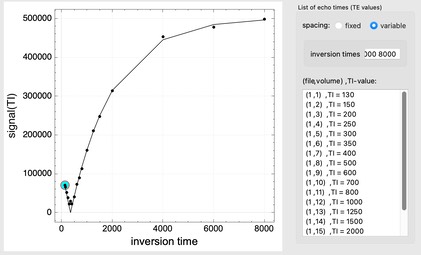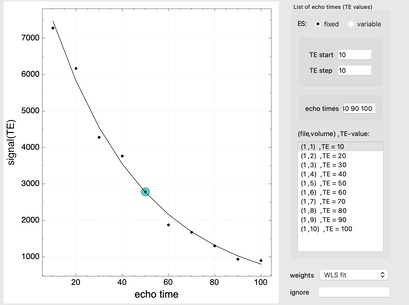
The T1-fitting module is designed for inversion-recovery magnitude data following Barral et al., Magn Reson Med 2010, A Robust Methodology for In Vivo T1 Mapping. The Barral method simplifies T1 fitting into a one-dimensional line search to optimize a figure of merit. It’s fast and robust. Like all inversion-recovery T1 mapping methods, it’s important to collect some long inversion recoveries to stabilize fits.

T2 fits linearize (natural log) the signal decay and employ either ordinary or weight least squares fitting, with the latter assuming that variance scales inversely with the square of the signal. Fitting of ADC proceeds identically.
A final option is to fit T2 and ADC simultaneously. The first cycle of the NIH-supported multi-site Stroke Preclinical Assessment Network (SPAN) using T2 to identify brain lesions two days after stroke, with ADC used to distinguish lesion from CSF. This double-relaxation fitting method was developed to develop and early SPAN prototype for lesion identification, which later moved to another site for further development and ongoing support. A preprocessing panel for stroke lesion segmentation based upon T2/ADC has been disable in the fastmap program for now.